Urban Adivasis of Bhopal Left to Struggle as Pandemic Rages
Reality check: Negligent government and the fight for survival
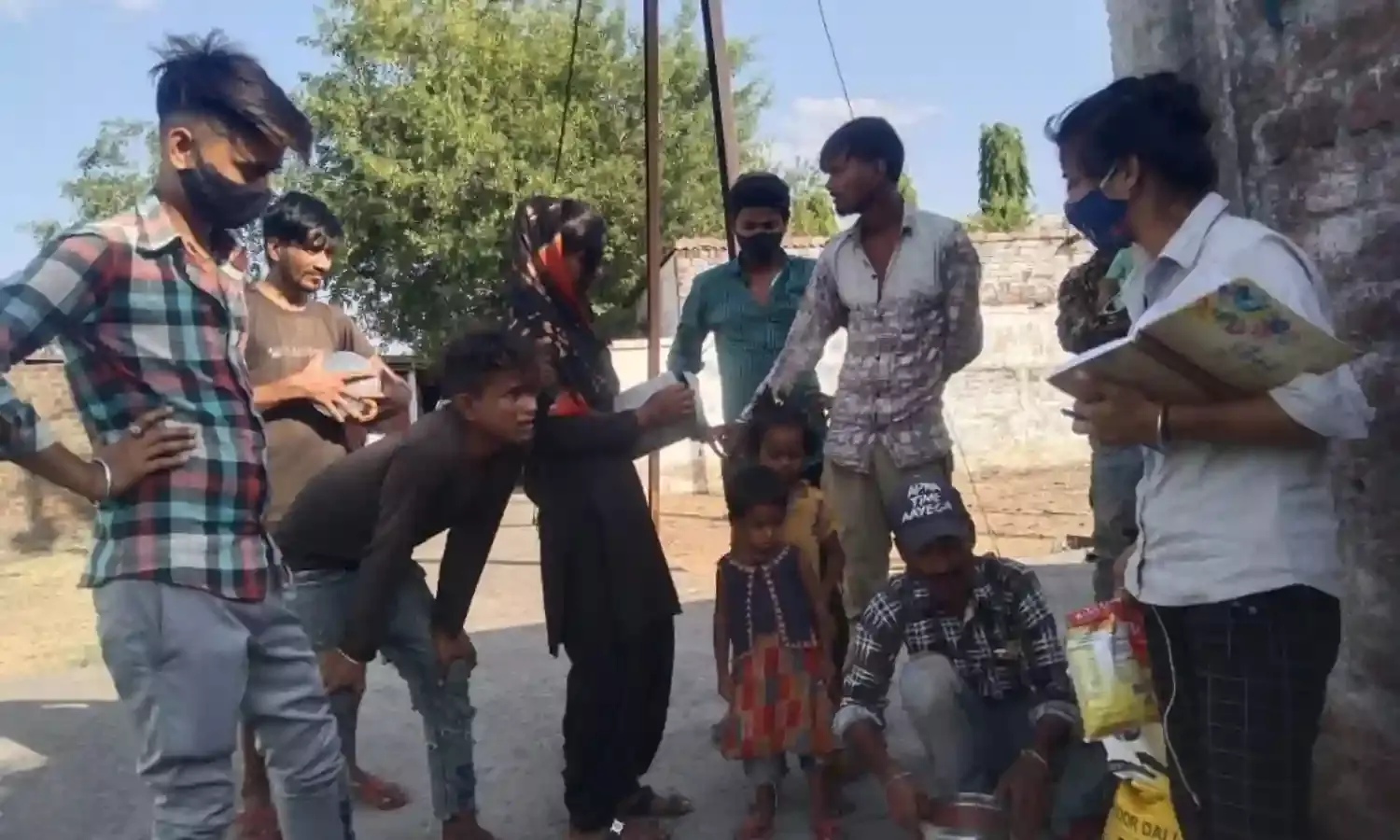
Before April, people from oppressed communities and daily wage earners across the country saw the pandemic seemingly fade from their lives. Soon the illusion of getting on with their livelihoods broke, and of course the lockdowns returned to haunt them and their families.
This time the situation is worse. They are more vulnerable than they were during the first wave of infections and lockdowns, as governance has gone down to rags.
The vulnerability of a few such marginalised Adivasi communities residing in Bhopal makes it evident that elected representatives, the wealthy media and all possible bureaucrats have been ignorant or worse, as the pandemic hits these communities hardest.
The Adivasi and ‘denotified’ communities such as Gonds and Pardhis, Kanjars, Saperas, Dafales and several others who live in and around Bhopal are struggling to live, or manage food for their families in the absolute absence of any income security and the apathy of local governing bodies and elected representatives.
They were brought under the illusion of a return to normalcy, and so they too were letting their guard down and preparing to resume their work.
Most people from these communities work for a daily wage in scrap collection, construction labour, catering services, ornament stalls, making and selling dholak drums, etc.
A year back when the pandemic entered India through a few airports and the Union government imposed a sudden lockdown, leaving the majority of working people stranded, people from denotified and tribal communities also suffered hunger, cramped health infrastructure, and absolute loss of livelihood for 3 months.
Even after the lockdown was relaxed, hardly any support from local governing bodies or centre-state policy mechanisms has been developed that could have made their lives slightly better off.
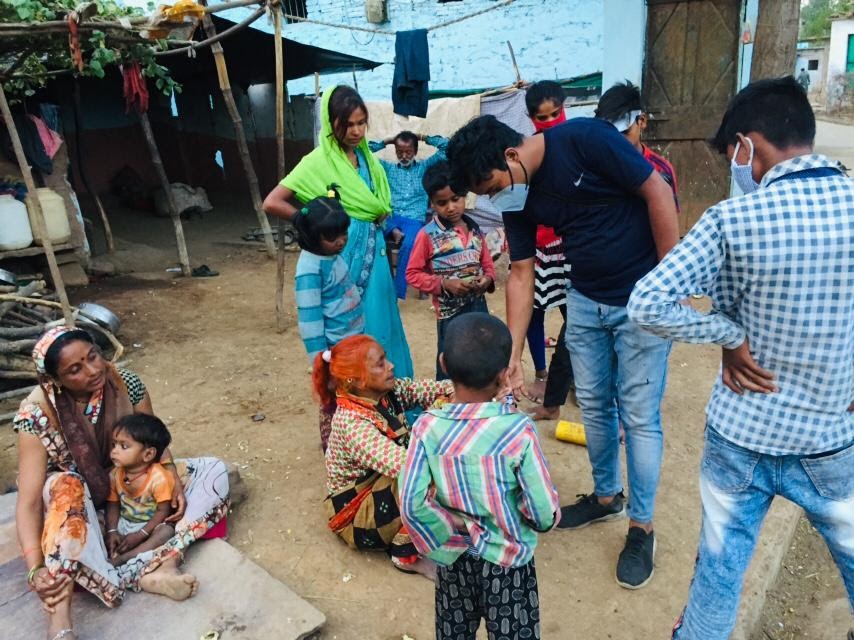
During the first wave, Udit, a Pardhi youth, had stated that ‘Corona se pehle bhook aur berozgari se mar jayenge’ (Before Corona hits us we will die of hunger and unemployment).
Now in the second wave, the raging pandemic is not just costing these communities their livelihoods, in the struggle to gather sufficient rations they are now also witnessing a lot of lives being lost to the disease.
The dreadful virus is exposing government incapacity to provide sufficient food security to these families, as was the case last year, but now it is also shattering the health infrastructure.
Despite repeated warnings from scientists and medical experts around the globe, including those advising it, the government did not react to the red flags, and announced ‘victory’ against the pandemic, creating the delusion that things were back to normal.
They failed to prepare the food and health infrastructure these communities could have availed in this crisis.
It has been almost a month since a lockdown was imposed in Bhopal. These families’ finances were already depleted and the only resort that they have is the Public Distribution System. But they can only avail bajra, which is not even a staple diet in this region, and wheat through the PDS. Other essential foods like oil and dal are not available, when the prices of these commodities are at their peak.
A person from the Kalandar community said requesting anonymity, “Hume to ration card hone ke baad bhi sirf bajra hi milta hai, jo paryapt nahi hai” (We only get bajra despite having a ration card, which is not sufficient).
Another grave problem with the PDS is that it is being coercively related with vaccination, whereby communities are being denied rations if they are not vaccinated.
This is confirmed by a person from the Gond community, who says “Meri mummy ko kaha pehle tika lagva ke aao, phir ration milega” (They told my mum to first get vaccinated and only then will you get the ration).
Such instances were frequently reported in early April, even though there was no such formal policy announced by the state. However on falling short of vaccines, such instances stopped. Regardless of vaccine underprovision, it is absurd to link crucial PDS rations with mandatory vaccination.
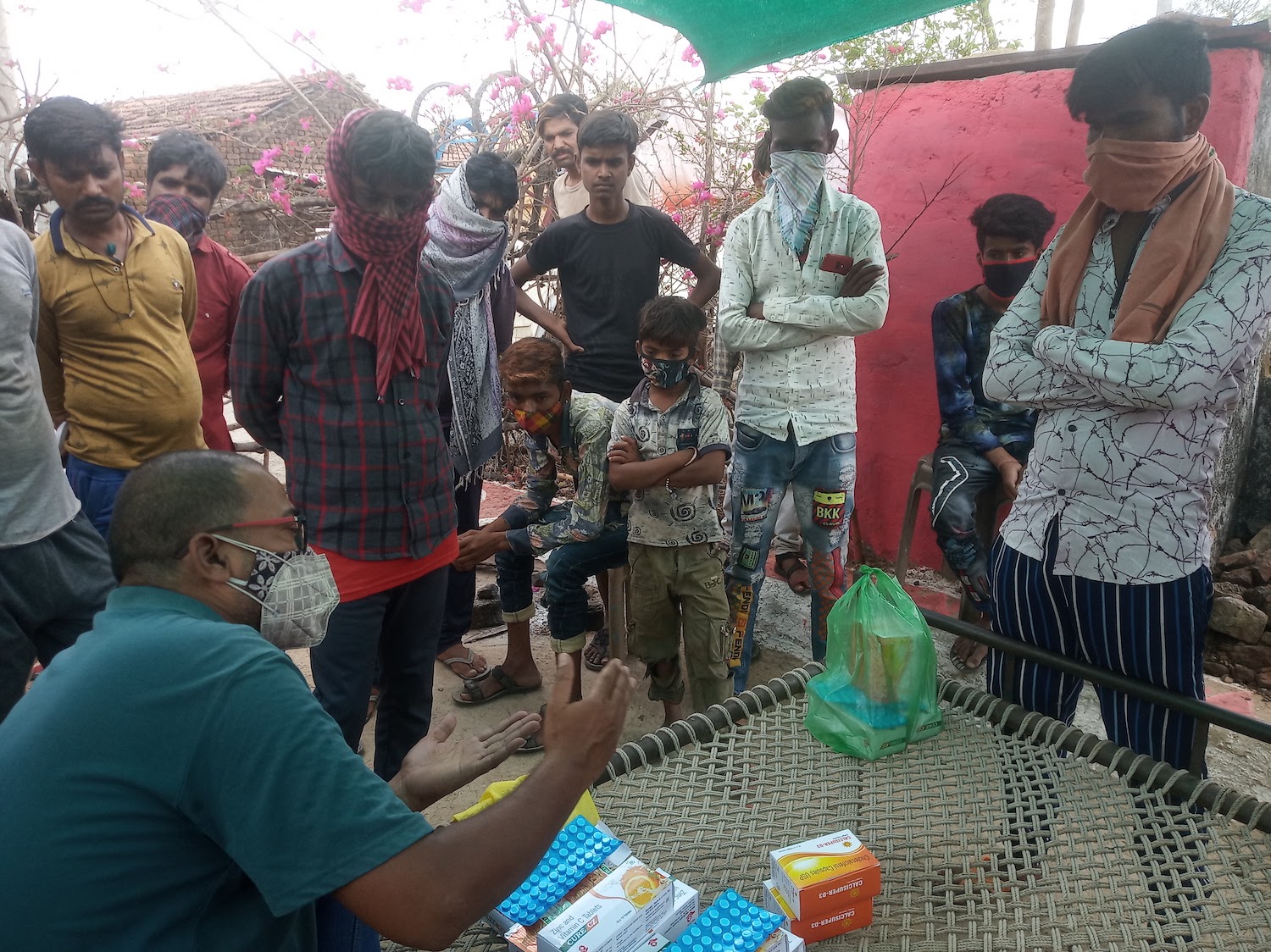
Amidst these uncertainties, the DNT and Adivasi communities of Bhopal, from their respective bastis, have been writing complaints and demands to the ward parshad and the collector. But there has been no election to appoint a ward parshad for the last year, making the work of local bodies lackadaisical and dysfunctional.
Being mostly daily wage earners, they have been struggling to obtain sufficient food for their families while their work has come to standstill. So they have been trying to get their hands on various essentials at the risk of their lives and police atrocities.
There was the case of a Pardhi woman who went to collect scrap amidst the lockdown, because of a lack of income, and was taken into custody by police.
Similarly in Nishatpura, a person was standing with a vegetable stall when the police damaged the stall and warned them not to put it up again. This despite the fact that vegetables are essential commodities and their sale is permitted during a lockdown.
Children and women from Gond families are resorting to begging, and men waiting near chaurahas (crossroads) to see if they can get any work as labourers.
The vicious circle of income deprivationa and food insecurity is forcing these vulnerable communities of Bhopal to step out amidst the raging pandemic and risk their lives, simultaneously dealing with police atrocities, in a repetition of the situation they faced in the first wave.
Despite having enough time and being well aware of the second wave that seemed inevitable, elected governments have failed these communities yet again.
The first wave cost hardly any loss of life from the Adivasi and DNT communities of Bhopal. But in its second wave the pandemic has cost 16 deaths from these communities in and around Bhopal in the last 3 weeks. (This figure indicates the cases that have come to our knowledge during our community interventions: they were not reported as covid deaths). There are several reasons for this escalation of deaths.
The virus mutants have brought several other symptoms than the ones experienced in the first wave. These symptoms have not been clearly conveyed and communicated within the communities, and people find it difficult to identify symptoms that may be cause for alarm. Another, related reason is the lack of acceptance that they can get infected with COVID and they remain in denial of the same.
With both of these reasons in place, they fear getting tested even if they have the symptoms. The fear exists because of presumptions such as ‘if I test positive, I will be taken to hospital where my health may deteriorate and I might die’. Local doctors have also been giving people ‘drips’ and prescribing medicines for typhoid as well as antibiotics, which help many, contributing to the denial of covid.
Due to such denial, for many the point comes where their condition gets worse and the oxygen level drops to the point that they have to rush to hospital. However, the hospital then does not admit them because they cannot produce the covid-positive report necessary for the admission.
There have also been several instances where in spite of having serious symptoms the test result is negative. In one instance a woman’s oxygen level had dipped to 60, but her family could not find a hospital bed in the city. She had to be taken to the adjoining district of Sehore where she breathed her last.
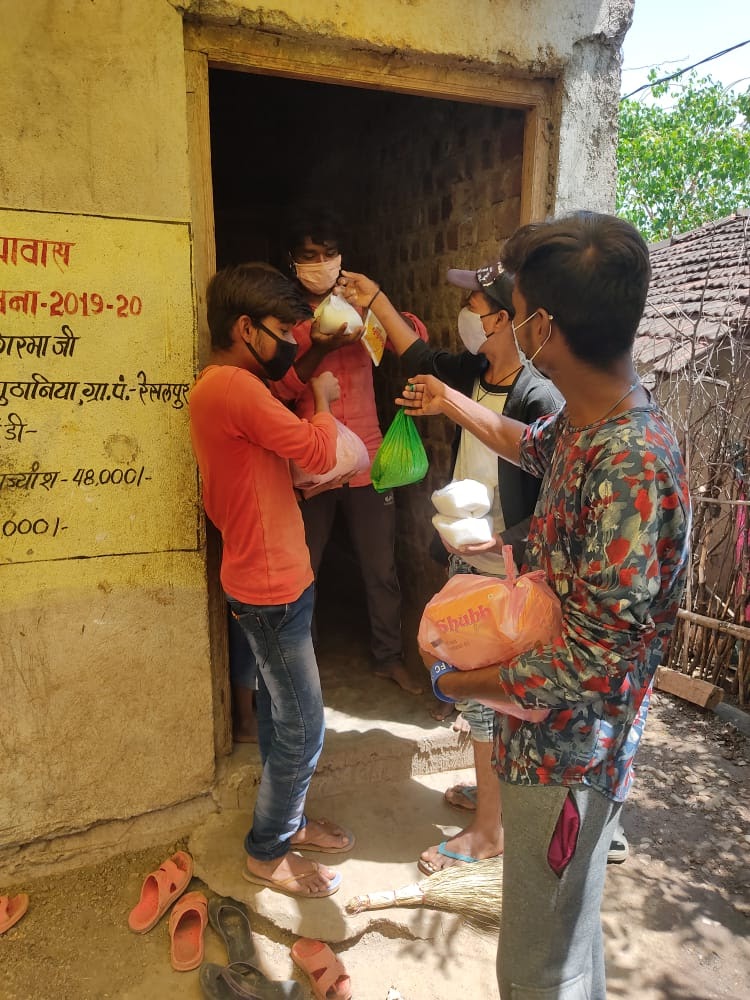
These families can barely afford food rations, and in such times, with all the mentioned dilemmas they are going through, how could anyone expect them to keep track of their oxygen levels or fever temperatures?
The community is not to blame for this. Despite having sufficient time and funds, their governments did not care to invest in improving public knowledge around the virus, or make any attempt to break myths around the same.
While the government has been completely passive amidst the crisis, the social media created several channels of communication providing leads about ICU beds, oxygen beds, cylinders, steroids, etc. However, for people from these communities, how the leads for such medicinal resources able to reach them remains a question.
People from these communities living in rural localities too have been suffering from this, but their struggle remains invisible which makes their condition worse. Not only are they barred from availing medicinal facilities easily, they are ignored when it comes to communicating any relevant aspects of the pandemic, be it about the new symptoms, precautions, leads through social media or about getting vaccinated.
An anecdote from Mundikhedi village in Sehore district by a person from the Pardhi community who came back to his village due to the lockdown and with no possible source of livelihood confirms this:
“Ek baar tika lagvaya, ab kab lagvana hai, kaunsa lagvana hai aur kaha pe lagavana hai ye pata nahi, mobile bhi nahi chal raha to message kaise ayega?” (I got the first dose of vaccine, but I have no clue when to get the second dose, of which vaccine and where. My mobile is not working so no message can come either.)
Many other people from rural localities who have limited resources struggle to get registered for the vaccine as well. All this would have been much simpler if there was proper information and awareness being spread, and simplicity around the vaccination process.
Had such a public health and governance system been established, people from vulnerable communities and those residing in rural localities, who are often ignored due to technocratisation of these processes, would not have been constantly excluded from availing of healthcare which is their right.
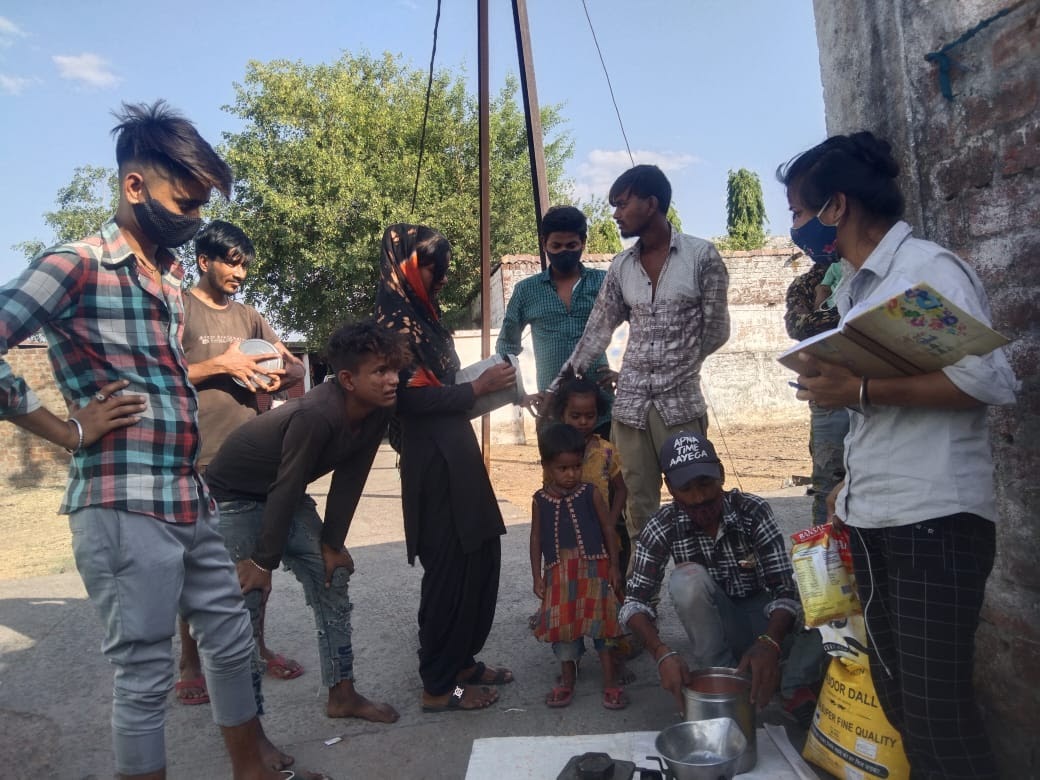
When our elected representatives were busy conducting rallies for state elections, subsidising the Kumbh Festival and investing massively in the Central Vista demolition project claiming it to be an ‘essential service’, it not only spread the virus, but took away the necessary funds and attention required to strengthen our health infrastructure and ensure food security.
The hypocrisy around vaccination whereby with each phone call, we hear about the importance of vaccination, but at the same time the limited stock of vaccines continues to haunt people.
When the so-called leaders proclaimed victory against the pandemic, they also exported massive doses of vaccines to other countries and still haven’t ensured sufficiency of the same in India. All that the Union government has done is to preach and spread the delusion of ‘positivity’ when the country is in chaos.
People are in fear, constant dilemmas, and are going through physical and mental trauma. Those from vulnerable communities like the ones in Madhya Pradesh and across the country continue to suffer without getting any help or even acknowledgement of their trauma.
The way vulnerable communities of Bhopal is responding to this crisis is by being ‘atmanirbhar’. While public authorities seemingly live in some parallel dimension, civil society and the community is indeed trying to become ‘atmanirbhar’ or self-reliant in their struggle to survive.
Bhopal based youth collectives, such as Majal from the Pardhi community and Sangvaari from the Gond community, with the support of an organisation we worked with called Muskaan, are trying to collate food and medicinal resources for denotified, nomadic and tribal communities across Madhya Pradesh through crowdfunding and the fundraisers.
One can access this link to read about the Majal collective and contribute to their work and their situation amidst the pandemic. In and around Bhopal are several other collectives like the Criminal Justice and Police Accountability Project or CPAP, which is trying to ensure state accountability by treating the pandemic and the corrupt health infrastructure as a law and order problem.
There are also individuals, like the well known auto driver Mohammad Javed Khan who turned his auto into an ambulance, who have been active in providing relief, leads about COVID related resources, etc.
Youth from these collectives are also writing letters to the sub-divisional magistrate to ensure that testing vans can come to their localities, and to ensure access to rations for non-PDS cardholders.
However, there is only a chance that this may happen after repeatedly pursuing these authorities many times over. Certainly the system of healthcare and food security is neither transparent nor convenient for most people from these communities in Bhopal and adjoining areas.
With inputs from Shivani Taneja



